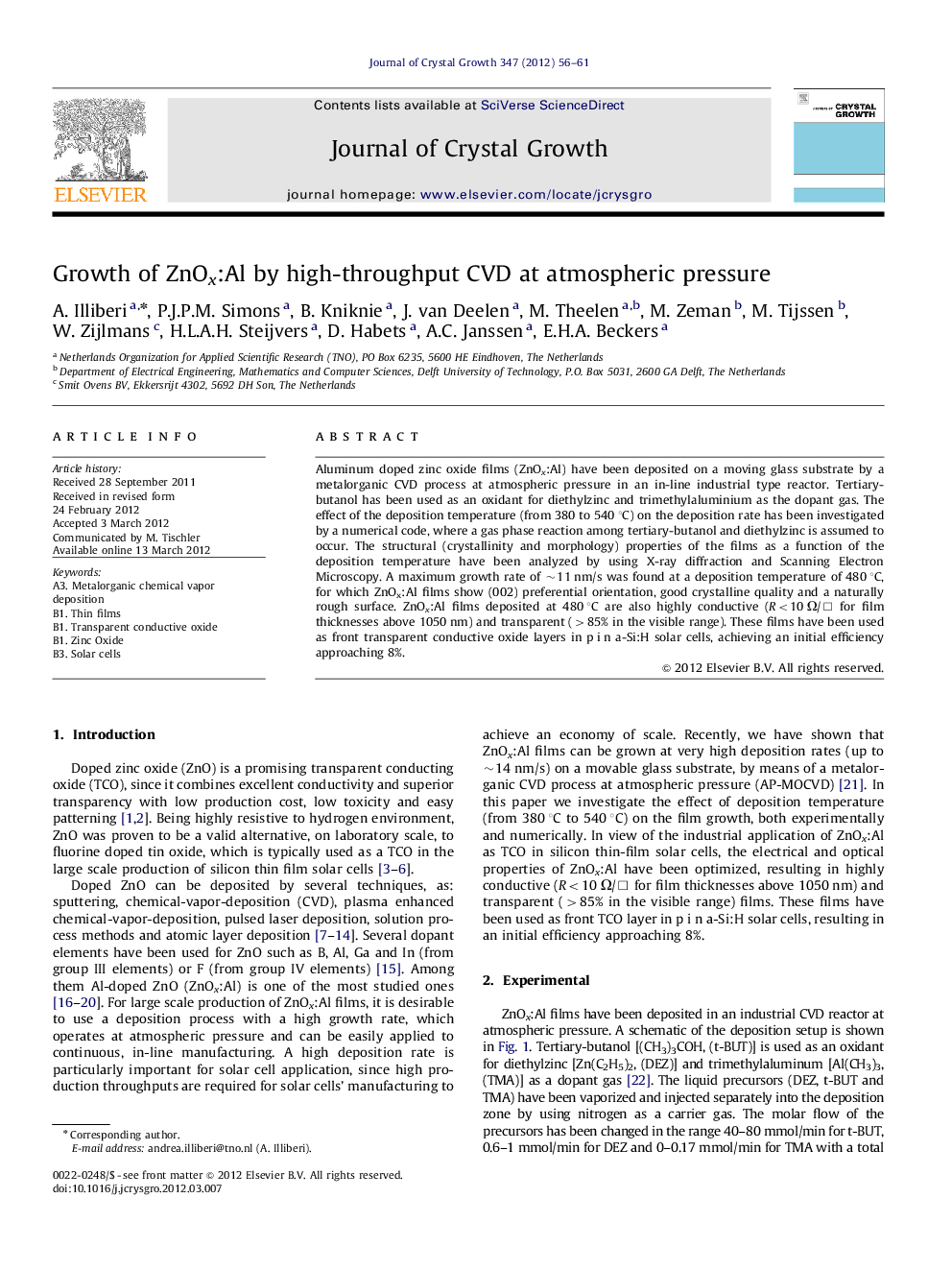| Article ID | Journal | Published Year | Pages | File Type |
|---|---|---|---|---|
| 1791620 | Journal of Crystal Growth | 2012 | 6 Pages |
Aluminum doped zinc oxide films (ZnOx:Al) have been deposited on a moving glass substrate by a metalorganic CVD process at atmospheric pressure in an in-line industrial type reactor. Tertiary-butanol has been used as an oxidant for diethylzinc and trimethylaluminium as the dopant gas. The effect of the deposition temperature (from 380 to 540 °C) on the deposition rate has been investigated by a numerical code, where a gas phase reaction among tertiary-butanol and diethylzinc is assumed to occur. The structural (crystallinity and morphology) properties of the films as a function of the deposition temperature have been analyzed by using X-ray diffraction and Scanning Electron Microscopy. A maximum growth rate of ∼11 nm/s was found at a deposition temperature of 480 °C, for which ZnOx:Al films show (002) preferential orientation, good crystalline quality and a naturally rough surface. ZnOx:Al films deposited at 480 °C are also highly conductive (R<10 Ω/□ for film thicknesses above 1050 nm) and transparent (>85% in the visible range). These films have been used as front transparent conductive oxide layers in p i n a-Si:H solar cells, achieving an initial efficiency approaching 8%.
►ZnOx:Al is deposited on a moving glass by an industrially scalable MOCVD at atmospheric pressure. ► Film growth as a function of deposition temperature has been investigated. ► Maximum deposition rates of ∼11 nm/s are found at a deposition temperature of 480 °C. ► ZnOx:Al films deposited at 480 °C are highly conductive and transparent. ► a-Si:H solar cell has been deposited on this material, with an initial efficiency approaching 8%.
